Quick Summary
Incomplete test coverage can lead to missed requirements, costly rework, and compromised product quality.
Traceability analysis is the practice of linking each requirement to its related test cases, defects, and deliverables. This structured approach ensures that no requirement is overlooked, testing aligns with project goals, and any changes can be quickly assessed.
Effective traceability in software testing helps QA teams maintain visibility across all project artifacts, making it easier to identify gaps and ensure comprehensive quality.
In this blog, we’ll explain what traceability analysis is, why it’s essential in QA, and explore the different types of traceability matrices and when each is most effective.
What is Traceability Analysis in Software Testing?
Traceability analysis in software testing is the process of linking each requirement to its corresponding test cases, code modules, design elements, or defects to ensure complete coverage and quality validation.
The most common way to perform traceability analysis is by using a traceability matrix, a structured table that clearly shows these relationships.
A well-maintained matrix gives QA teams complete visibility into coverage, progress, and the impact of changes during the project lifecycle.
Key components of a traceability matrix include:
- Requirements – Functional or non-functional needs from the project scope.
- Test Cases – The tests are designed to validate each requirement.
- Status – Execution results like “Passed,” “Failed,” or “Not Run.”
- Linked Defects – Issues found during testing tied to specific requirements.
Why is Traceability Analysis Important in QA?
Traceability analysis is crucial in software quality assurance (QA) because it ensures every requirement is tested, prevents wasted effort, provides compliance evidence, and helps teams understand the impact of changes before they happen.
In software projects, even one missed requirement can lead to costly rework, delayed releases, or compliance failures. Traceability analysis acts as a safeguard, maintaining a clear link between requirements, test cases, and outcomes throughout the development cycle.
Here's why it matters:
- Ensures complete requirement coverage
- Removes redundant or irrelevant tests
- Supports accurate impact analysis
- Provides compliance documentation
What Are The Different Types Of Traceability Matrix?
Traceability matrices come in different forms depending on what you want to track: requirements, test cases, designs, code, or defects.
While the most common is the Requirements Traceability Matrix (RTM), there are different RTM testing types in the QA process: Forward Traceability, Backwards (Reverse) Traceability, and Bi-Directional Traceability.
1. Forward Traceability Matrix (FTM)
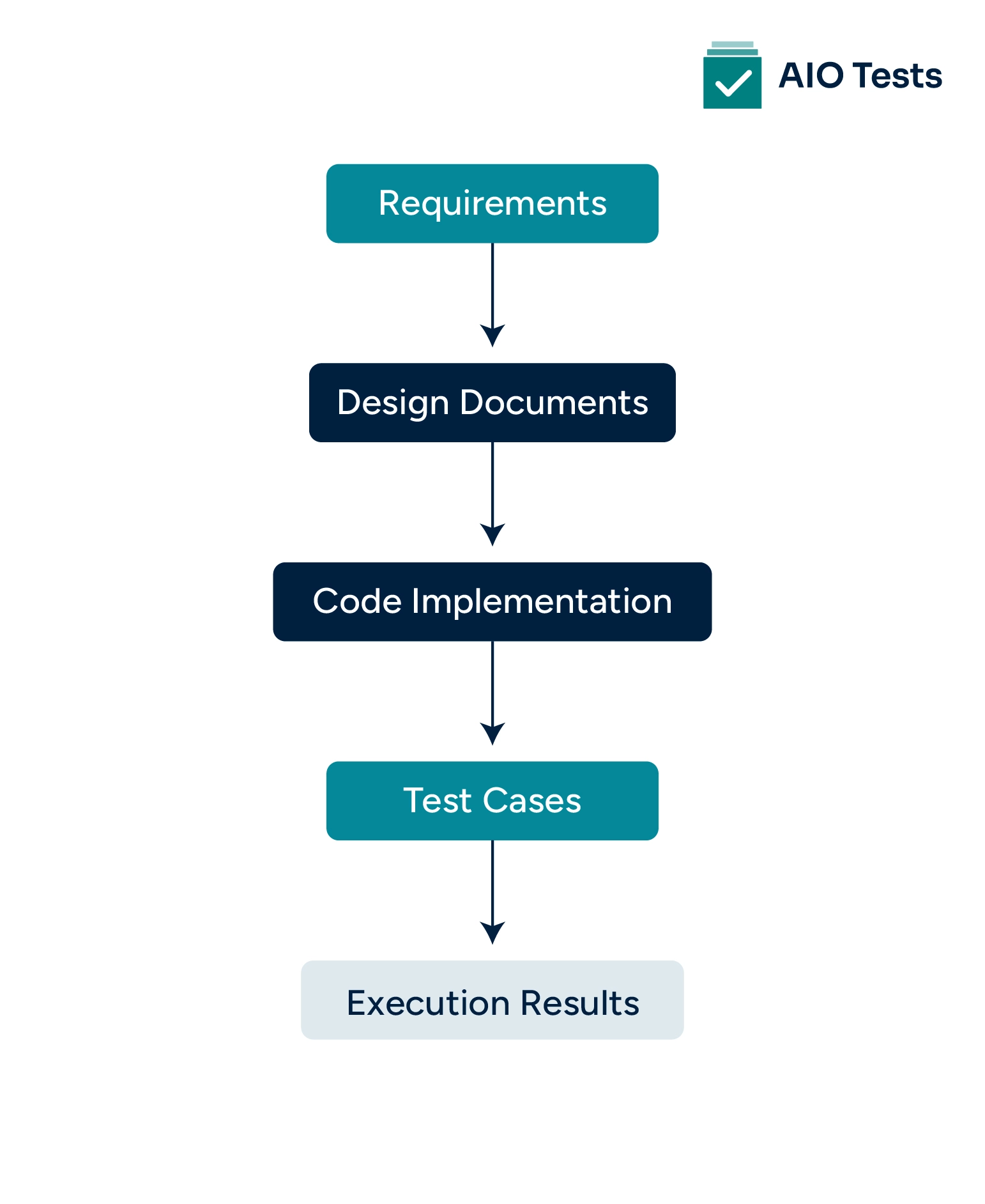
Maps requirements → design → implementation → test cases, moving in the same direction as the development process. Ensures every requirement is implemented and validated through one or more test cases.
When to use:
- At the start of the project, ensure every requirement is mapped to one or more test cases.
- In Agile or Waterfall projects, where requirements are stable but need continuous verification.
- When the priority is full coverage validation
2. Backward (Reverse) Traceability Matrix (BTM)
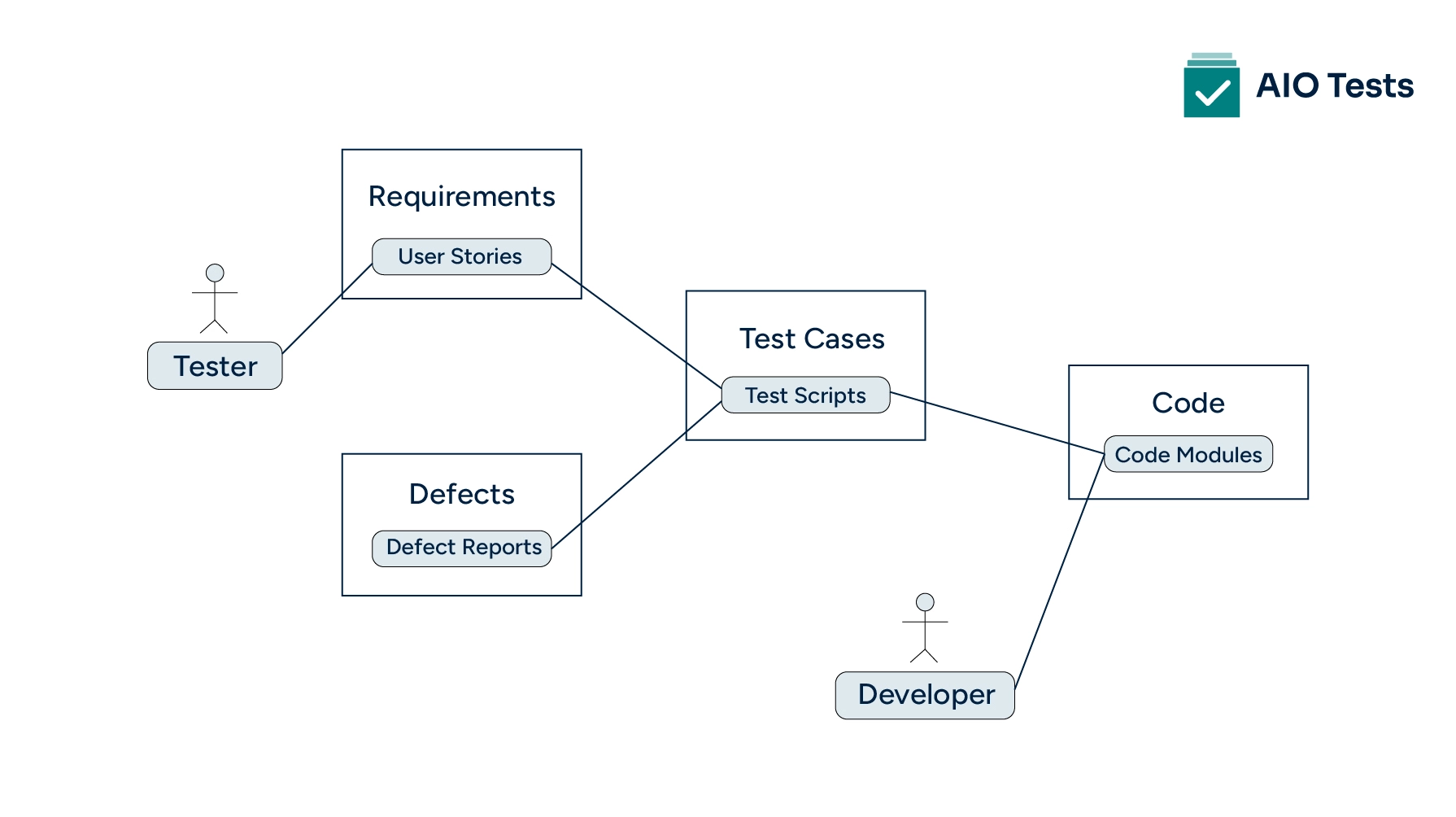
Maps test cases, code, or design elements → original requirements, tracing project artifacts back to their source. Ensures no feature or test exists without a valid requirement, preventing wasted effort and scope creep.
When to use:
- During test case reviews, eliminate redundant or irrelevant tests.
- In projects prone to scope creep or where changes are frequent.
- When you need to justify every test case to stakeholders.
3. Bi-Directional Traceability Matrix (BDTM)
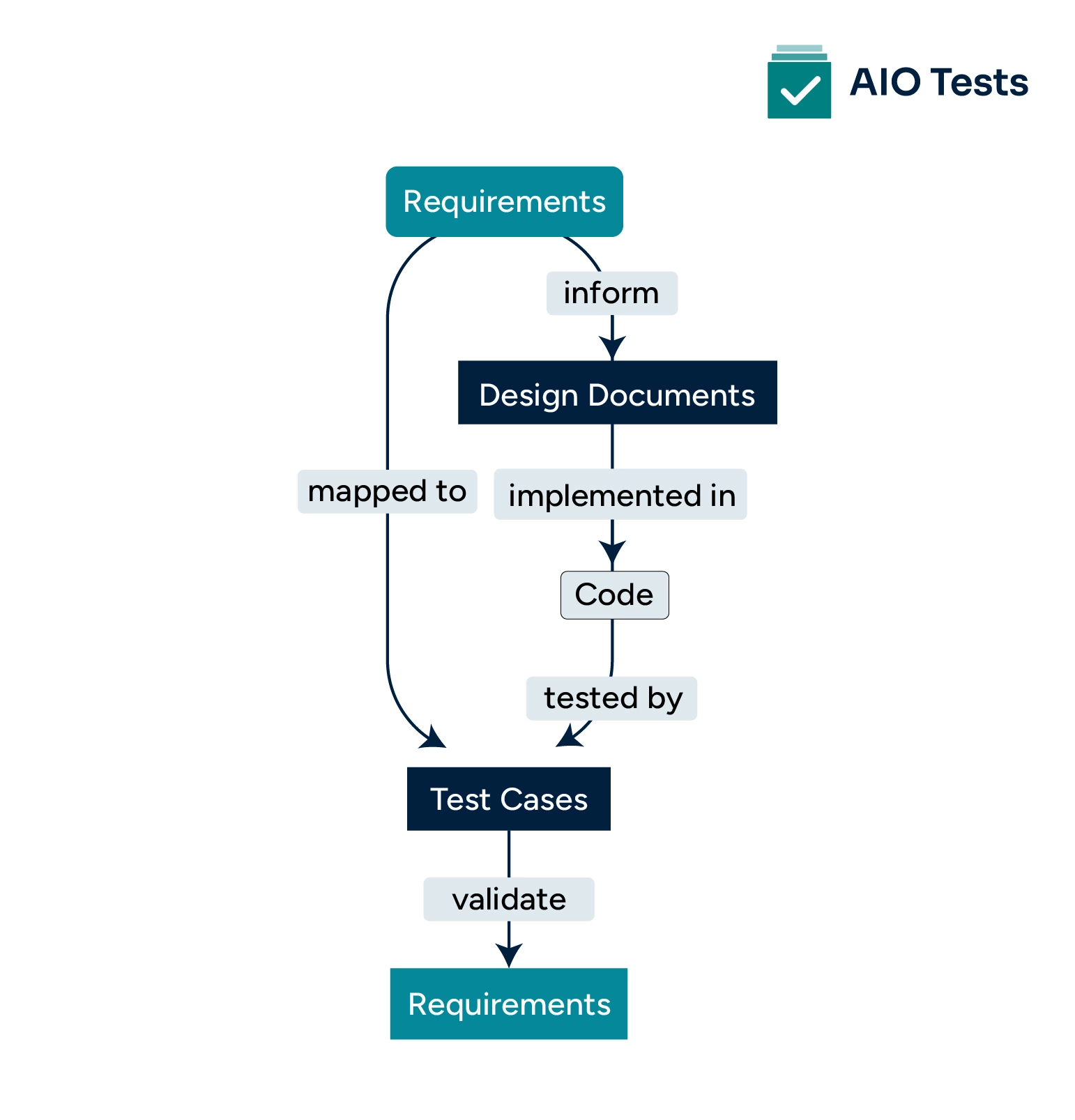
Combines forward and backwards mapping (requirements ↔ design ↔ implementation ↔ test cases). Provides full visibility in both directions—ensuring requirements are tested and all tests map back to valid requirements.
When to use:
- In complex or compliance-heavy projects requiring full two-way coverage.
- For teams practising agile testing, where changing requirements require quick validation in both directions.
- When both coverage assurance and impact analysis are priorities.
Extended Traceability Variations
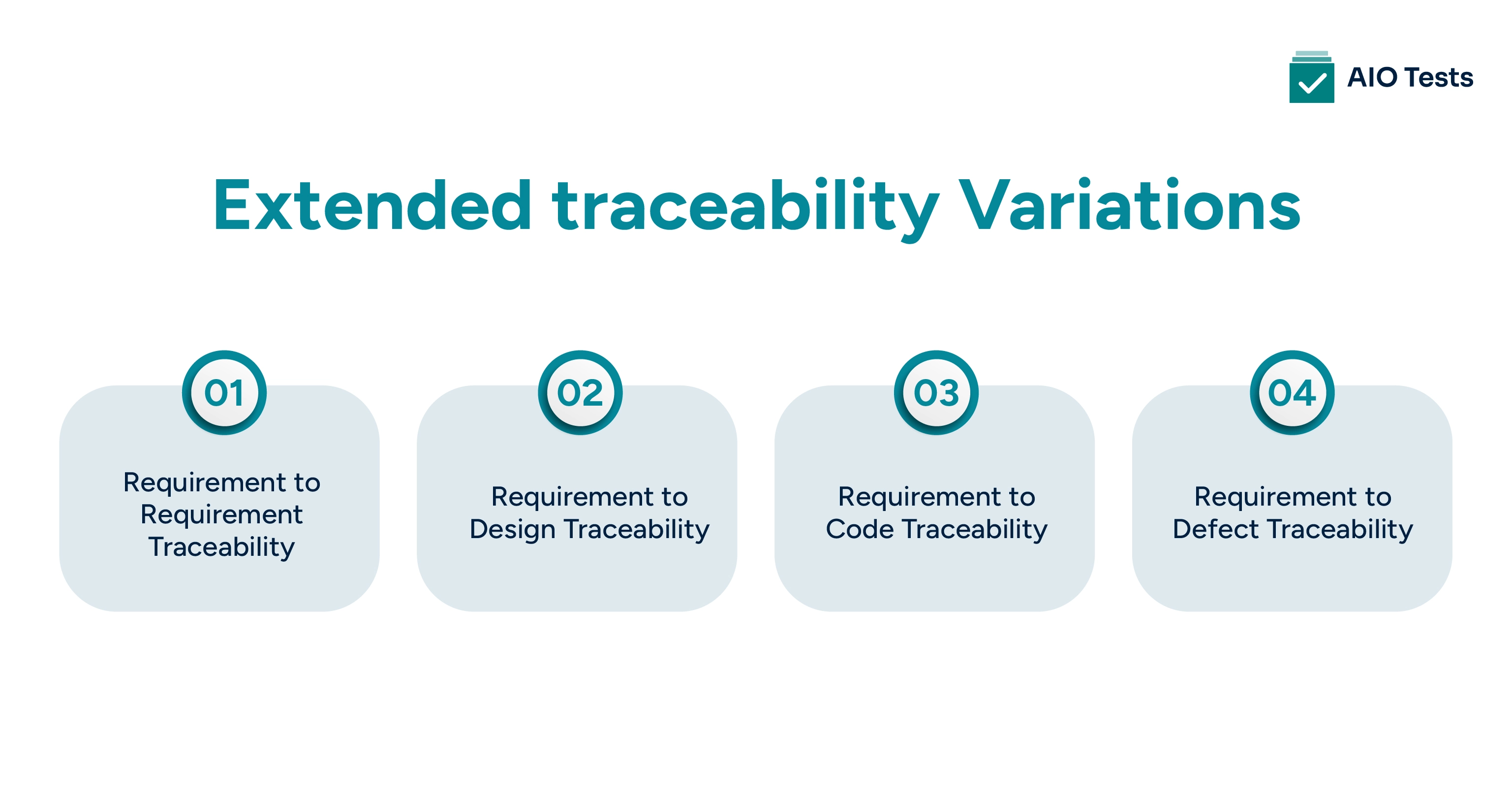
Beyond the three main RTM types, traceability analysis can extend beyond requirements-to-tests, linking requirements to other project artifacts such as design documents, code modules, and defects.
1. Requirement-to-Requirement Traceability
Maps high-level business requirements to detailed, low-level functional requirements or user stories. Shows how strategic goals are broken down into actionable tasks, ensuring alignment from top-level objectives to implementation.
When to use:
- In large enterprise projects with multiple requirement levels.
- When stakeholders need to see the breakdown from strategic goals to technical specifications.
2. Requirement-to-Design Traceability
Connects requirements to design artifacts such as UI mockups, wireframes, and architecture diagrams. Ensures the design accurately reflects the intended requirements and supports early detection of mismatches between design and business needs.
When to use:
- In design-heavy projects where UI/UX accuracy is critical.
- When early detection of design-to-requirement mismatches is essential.
3. Requirement-to-Code Traceability
Maps requirements to specific code modules, classes, or components. Helps developers, testers, and auditors verify which parts of the code implement each requirement, aiding in debugging, code reviews, and compliance audits.
When to use:
- In regulated industries where proof of implementation is required.
- During debugging, it is essential to identify which code supports a specific requirement quickly.
4. Requirement-to-Defect Traceability
Links defects found during testing back to the requirements they impact. Identifies requirements that are unstable, prone to defects, or at higher risk, enabling better prioritization for fixes or redesign.
When to use:
- During defect triage, the goal is to find high-risk requirements causing repeated failures.
- For quality improvement planning in long-term projects.
Best Practices for Maintaining a Traceability Matrix
In traceability analysis, keeping your traceability matrix in software testing accurate and up to date is essential for ensuring comprehensive test coverage, detecting gaps, and supporting quick decision-making during development.
Whether you are mapping requirements against different types of software testing, such as functional, regression, or performance testing, the traceability matrix plays a key role in maintaining accuracy.
A well-maintained matrix provides clarity, improves testing efficiency, and helps teams stay aligned with business goals throughout the project lifecycle. Here are some best practices to ensure your traceability analysis remains effective:
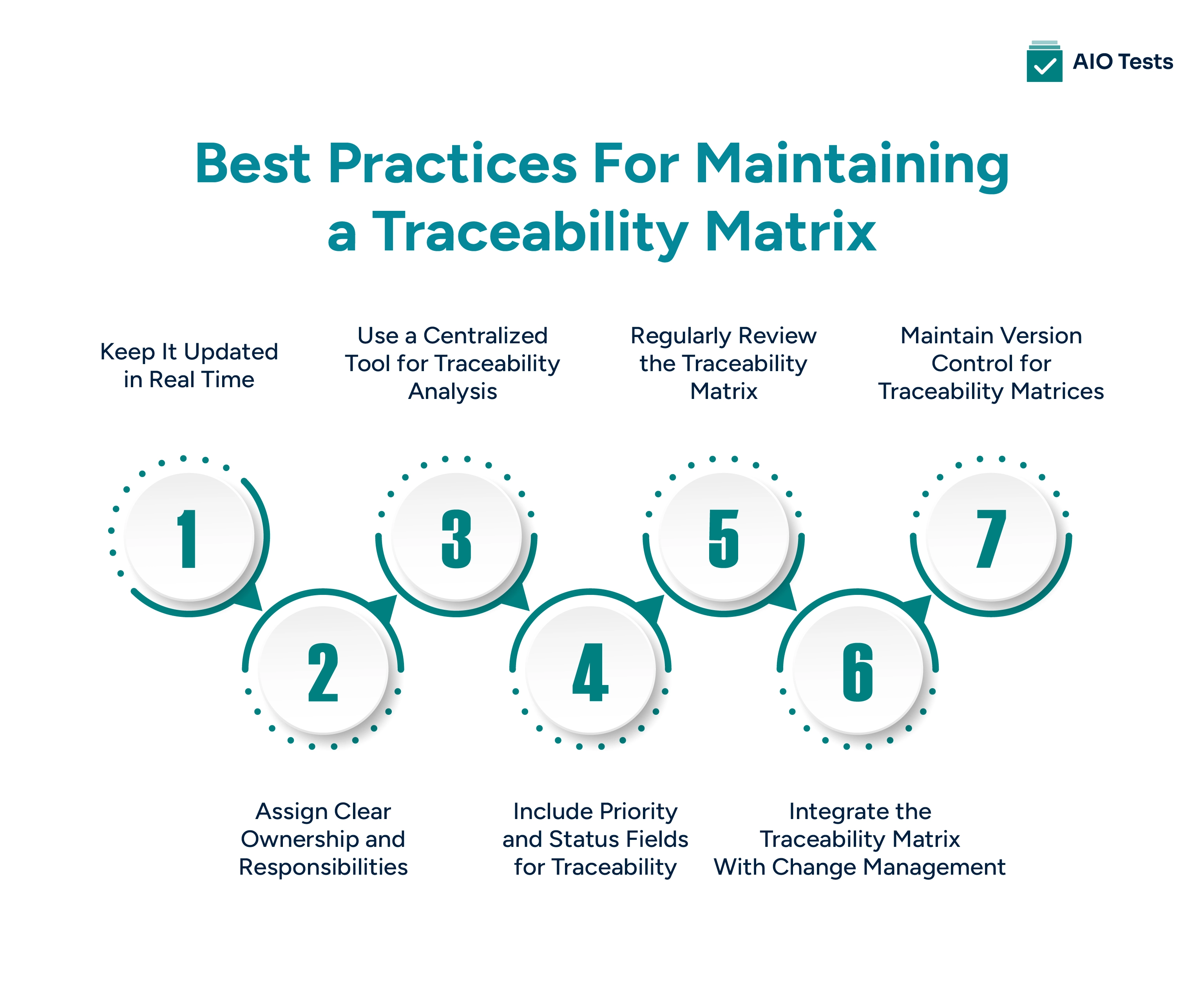
1. Keep It Updated in Real Time
In traceability analysis, one of the most critical practices is ensuring the matrix is updated as soon as there are changes to requirements, design elements, or test cases. If your traceability matrix in software testing isn’t updated in real time, you risk missing critical links between requirements and tests, which can result in untested features or unnecessary work.
2. Assign Clear Ownership and Responsibilities
Maintaining a traceability matrix in software testing requires dedicated attention. Assign a traceability analyst, QA lead, or business analyst to oversee the matrix. This ensures that updates are made promptly and accurately. Without clear ownership, the matrix can easily become outdated or inaccurate over time.
3. Use a Centralized Tool for Traceability Analysis
For large, complex projects, relying on manual methods like spreadsheets for traceability analysis can be inefficient, error-prone, and difficult to scale.
Centralized test management tools like AIO Tests link tests to requirements, providing a continuous view of traceability across the project. This connection makes it easier to perform impact analysis for any change, on any entity in the traceability matrix, while improving collaboration and tracking.
4. Include Priority and Status Fields for Traceability
For effective traceability analysis, the matrix should not only link requirements to test cases, but also include additional fields that track the priority of requirements and test cases, as well as their execution status (e.g., "Passed," "Failed," "Blocked"). This helps focus efforts on critical tasks and ensures that all requirements are tested in order of importance.
5. Regularly Review the Traceability Matrix
A traceability matrix in software testing is a living document that requires periodic reviews to ensure its accuracy and relevance. Whether it’s at the end of each sprint, milestone, or before a release, regular reviews will help catch any discrepancies, ensure all requirements are covered, and align the matrix with evolving project goals.
6. Integrate the Traceability Matrix With Change Management
Traceability analysis should be integrated with your change management process. When requirements change or new features are added, the traceability matrix in software testing should be updated to reflect those changes and ensure tests remain aligned with the revised project scope.
7. Maintain Version Control for Traceability Matrix
In regulated industries or large-scale projects, maintaining version history for the traceability matrix is essential for compliance, audits, and tracking changes over time.
A traceability matrix in software testing with version control ensures that the entire team can refer back to prior versions to validate decisions or resolve discrepancies. This becomes even more critical when aligned with practices like software functional testing, where accuracy and consistency directly impact quality outcomes.
What are the Challenges of Manual Traceability Analysis
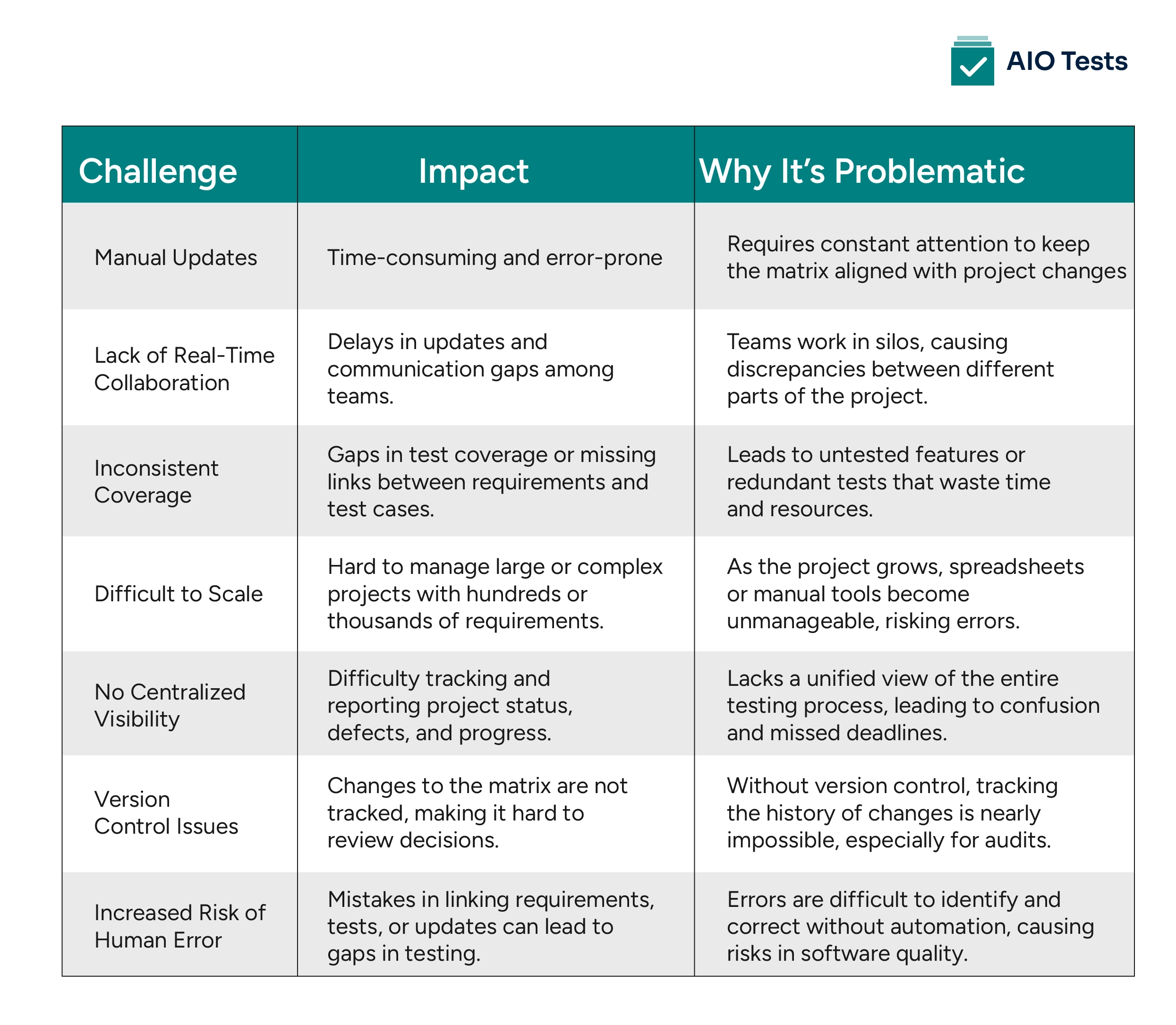
Tools That Support Different Types of Traceability Analysis
The challenges of manual traceability analysis become more pronounced as projects grow, which is why many teams adopt dedicated Jira test management tools such as AIO Tests, Xray, or TestRail. These platforms link requirements, test cases, defects, and design elements in one centralized system, creating a continuous view of traceability across the project.
By maintaining these connections, teams can quickly assess the impact of requirement changes, ensure that forward, backwards, and bidirectional traceability are preserved, and keep a reliable version history for audits and compliance.
Centralizing this information also improves collaboration, as every stakeholder works from the same, accurate data, reducing miscommunication and minimizing the risk of coverage gaps.
Conclusion
Traceability analysis is a key practice in software testing that ensures all requirements are validated through the testing process.
By linking requirements to test cases and design elements, teams can maintain clear documentation and ensure comprehensive coverage throughout the development lifecycle. This helps prevent overlooked features and ensures the final product meets business needs.
However, managing traceability manually can be time-consuming and prone to errors. Having the right test management tools makes it easier to maintain accurate, up-to-date traceability matrices, ensuring that every requirement is tested efficiently and thoroughly.
For teams looking to simplify traceability and improve their testing process, AIO Tests offers comprehensive traceability features that integrate with Jira, provide real-time updates, and ensure complete coverage.
If you're interested in exploring how AIO Tests can enhance your traceability process, book a demo today.









.svg)
